Space, secrets and the CIA: Who was the real Jerrie Cobb?
When a filmmaker began to chip away at the story of an heroic American aviator and star of NASA’s female astronaut program, she discovered a plot twist she never expected.
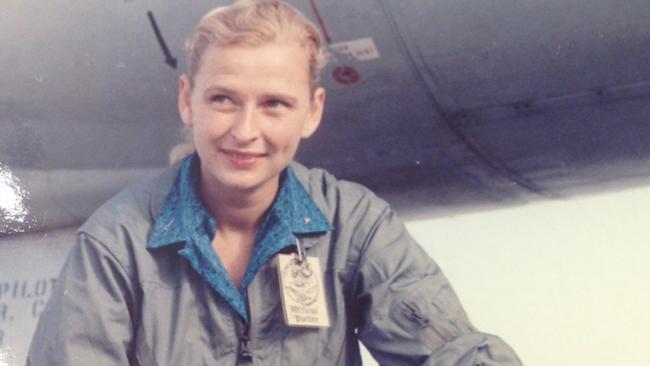
It was a cold clear winter morning as I drove towards Newark, New Jersey, rehearsing in my mind the sequence of steps that might get me to Redbird Airport in Dallas, Texas. For two years I’d been working with Jerrie Cobb to tell her story, and I was now driving to meet her again – this time to confront her about a problem.
Over those two years, starting in 2009, our relationship had revolved around telling the story of how Jerrie, a pioneering aviator, had joined the “Mercury 13” – NASA’s little-known female astronaut testing program in the early ’60s. As a filmmaker, I was captivated by her life story and wanted to bring it to the screen.
Jerrie and I had met many times for the interviews from which our screenplay was developed. I held the exclusive option to her space story rights, which contracted us together for interviews and access to her historical materials. Independent dramas often take years to develop, research, and produce a screenplay, but we were through all that and into the casting phase. It had been going swimmingly – until I received a mysterious warning from a new acquaintance, and a pall dropped over the project. I was now on my way to confront Jerrie about all that had transpired.
The problem, unusual as it sounds, was that I’d been briefly befriended by a high-ranking woman from the US Department of Defense who, by her own admission, worked in espionage. I’d met her on a week-long beach camping trip, where she arrived after me and parked herself in the campsite adjacent to mine. She was intelligent, fun and interesting, so my partner and I spent quite a bit of time sightseeing with her, during which she shared riveting details about her spying career, work she had conducted overseas fighting the war on terror. I’d met this extraordinary woman seemingly by happenstance – although in retrospect, I’ve wondered exactly why we met.
For a few weeks after that trip, we stayed in touch, and I even met up with her for lunch in Washington DC while I was scouting locations for the film. I started to notice her habit of constantly dropping subtle warnings into the conversation about my film project. These comments took the form of non sequiturs that passed by so quickly, I wasn’t even sure I’d heard them. Initially, I wrote them off as odd comments from someone who knew nothing about the film business. That changed when she visited my hometown.
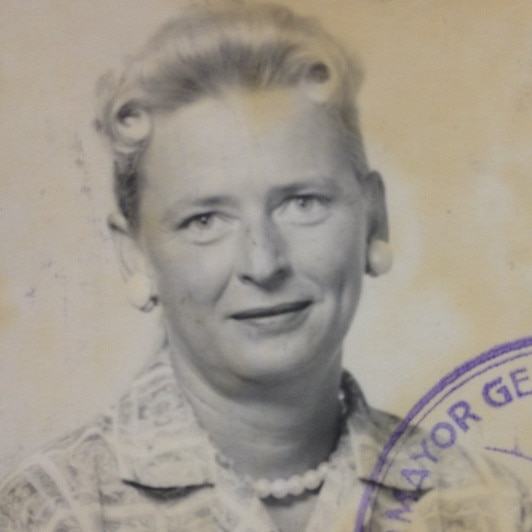
Claiming to be passing through Pennsylvania, she stopped by my studio, and I happily gave her a tour. Things were fine until we reached the research station for my film, where she began grilling me about the dates of the historical materials I had on hand and lecturing me about levels of government classification. I explained that I had nothing classified here, that this was 50-year-old history. She quickly zeroed in on binders of materials I’d gotten from Jerrie herself, and without opening them she claimed that those in particular were “classified and needed to be in a vault”.
This was outrageous on so many levels. I hadn’t told her much about the project, and certainly nothing that would give anyone a concern. Not about to be pushed around in my own studio, I laid down the facts – that these were an older woman’s private letters, photos and clippings, all of which I had legal access to and many of which were already public. It didn’t matter. The warning was given. Something about Jerrie’s documents was “classified”, and my project might have problems.
Her negativity about the film created a strain in the friendship, and she soon vanished from my life as quickly as she’d entered it. But after her bizarre warning, the project did hit a quick series of hurdles. Hurdles are normal in films. Warnings about classified documents are not. I decided it was my duty to look into it, to see if we were on solid footing or if something was amiss. So one day, as I was sitting at my workstation pondering this mystery, I googled “Jerrie Cobb” together with “CIA”.
What came up was a woman named June Cobb. I’d seen her name before while researching Jerrie on the internet, but had never clicked on it. This time I did. The search paragraphs were filled with gibberish, subject lines like “HSCA CIA segregated collection, box 40” that made no sense. I waded deeper. More gibberish. These were government documents – something to do with the CIA … something to do with assassination … something to do with the John F Kennedy assassination! I read on.
Whoever this June Cobb was, her name appeared in thousands of pages of government files that were part of the investigation into Kennedy’s death. The documents were dense, incomprehensible at first. I groped for a paragraph that made sense, that actually said something concrete. Slowly a picture of June emerged. Her full name was Viola June Cobb. She was three years older than Jerrie. She was a blonde, like Jerrie, but a CIA employee. She was an agent. She knew Fidel Castro! This woman was interesting. She had evidently worked in Castro’s office as a translator while she was spying on Fidel Castro! Who was this woman?
And then with a few clicks of my mouse, I knew. June Cobb was from the same hometown as Jerrie – Ponca City, Oklahoma. She was the same height as Jerrie, same weight. June had also lived for a time in Jerrie’s other hometown, Norman, Oklahoma. She was in the Civil Air Patrol, so they were both in aviation. Both were fluent Spanish speakers. Both had spent a lot of time in Latin America; both had left home in their twenties for South America. And then the point of no return: I saw that June Cobb had lobbied on behalf of the Indigenous tribes at the Amazon headwaters – the same tribes to whom Jerrie had devoted her life. Both women had visited the isolated region in the early 1950s when almost no white people had ever been there. Both advocated for causes related to the coca-leaf-chewing habits of the natives, and both had returned from their youthful adventure with a lifelong jungle-borne disease.
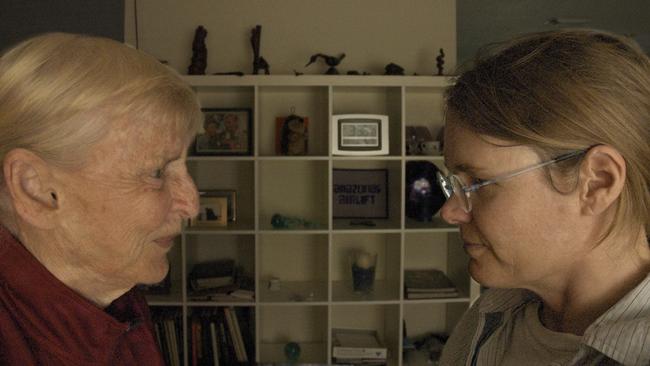
Consider, for a moment, the chances of any family allowing their college-age daughter to travel to the remote Amazon in the 1950s, at a time when the area was said to be riddled with cannibalistic headhunters. What was the statistical probability that two girls named Cobb, of identical description and similar ages, would be involved in aviation, from Ponca and Norman in Oklahoma, with both in the Civil Air Patrol, both being Spanish speakers, both travelling to that remote tribal region and then leaving with a jungle-borne disease, while also being involved in top-secret US government programs? June and Jerrie were the same person, surely.
I was still processing the shock of discovering this when I emailed Jerrie and told her we needed to talk. I explained that a woman from the Defense Department had visited my studio and delivered strange warnings about our film. She got back to me promptly, and we set up a rendezvous in a Newark hotel. I decided I would spare no question in the name of hurt feelings as I drove to see Jerrie that morning. She owed me answers, and I was determined to get them. But more important was that I’d discovered something eerily familiar as I followed the tributaries throughout the Kennedy assassination saga. I knew that no matter what else transpired, I had to somehow navigate our conversation to Redbird Airport.
Redbird was a small airfield in Dallas that in 1963 catered to the private plane market. During my three weeks of preparation, I kept coming back to comments I’d read that June Cobb “flew an airplane” and “had a twin sister in aviation”. This led me to search the thousands of documents in the JFK Assassination Records, looking for a plane similar to Jerrie’s. I didn’t have much to go on, but back then Jerrie flew a twin-engine seven-seat Aero Commander, so if she was June, that was probably the plane she was flying. After an exhaustive search of the JFK Assassination Records and witness interviews, lo and behold, I found a similar plane that piqued my interest, out at Redbird Airport.
On the day of the assassination in November 1963, not long after the president was shot, people living next to Redbird became concerned about activity on an outer runway. A private twin-engine plane had sat on the runway for over an hour, revving its engines without taking off. The engine noise was so loud, people were having trouble hearing news anchor Walter Cronkite delivering his grim updates on TV. Some even became concerned that the plane was connected to the crime and reported the incident to local broadcast outlets, putting the strange event into the record.
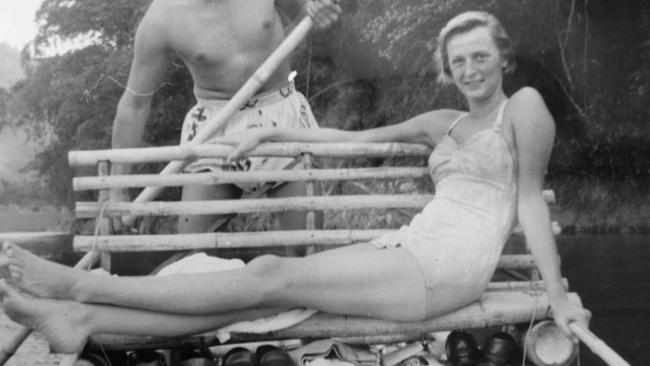
Nobody knows what Lee Harvey Oswald’s exit strategy was to have been, but every step he took after leaving the scene in Dallas took him closer to Redbird. First, he hopped on a bus exiting town toward the airport. When that bus stalled in traffic, he jumped out and was handed a transfer ticket for another bus. He then taxied to his rooming house and, from there, walked, so it is hard to say where he was headed. But the bus depot in the direction he was walking could have taken him to Redbird. And upon his arrest, the prepaid ticket, good for a Redbird bus, was still in his pocket. If Jerrie and June were the same person, could the secret she was hiding be about Redbird?
My heart was pounding as I pulled into the hotel. As I entered the lobby, there she was, eagerly awaiting me with an ear-to-ear smile and arms flung wide open. Up to and including that moment, I couldn’t have fathomed that she’d have been a willing participant in the president’s death.
We sat down in the restaurant for breakfast, and I ordered eggs while Jerrie ordered nothing. Throughout all our conversations, whether at her home or at a restaurant, she never ate or ordered. On this morning, I noticed she was wearing a hint of blush, something I’d never seen her do before. She was sporting electric-blue track pants and a sports shirt, as if ready to walk on a treadmill, and her hair was pulled into a tight ponytail, as always. She was bright, relaxed, and happy to see me.
I updated her on the film and said we’d hit a few snags. I noticed how nonplussed she was while I described the arrival of a federal agent. I had expected her to be sceptical, since I put warnings from federal agents and unicorns in the same category. Apparently, she did not. She accepted my story that an agent had appeared on my doorstep, without any mention of its rarity. She even boasted that she’d had many encounters with “spooks”, as she called them.
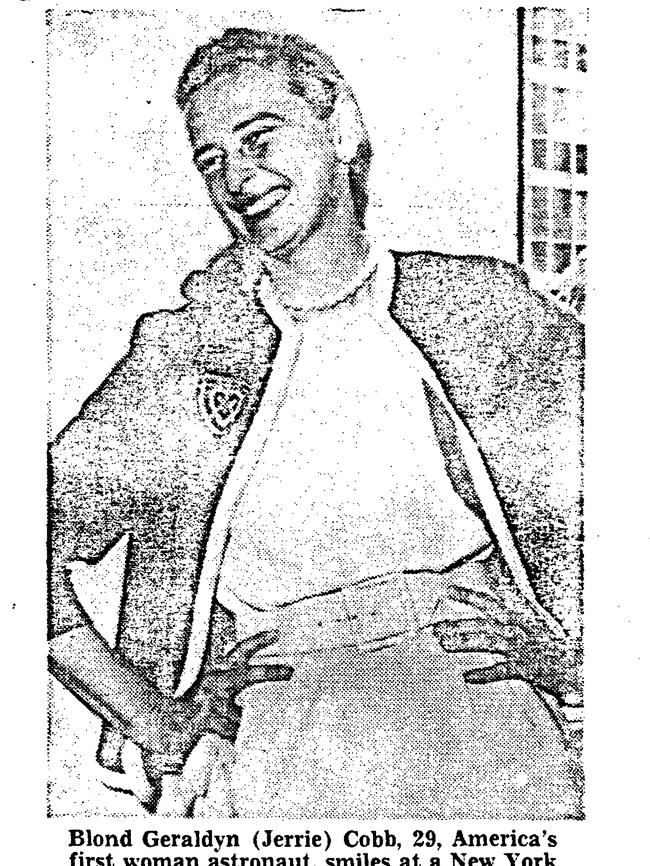

I confessed I’d never met one. I told her that with all the secret work she’d done with NASA’s space program, she certainly could have signed up for the CIA, but she wouldn’t be able to tell me if she had. Jerrie said yes, it was true that “the agency” (as she called it) would put agents under secrecy agreements, and she was very familiar with the parameters of those agreements, and with what could and could not be discussed. This is how our conversation went:
M: From what the visiting agent told me, once an agent signs a secrecy agreement, they can’t divulge information, or they could be held accountable under the law. I don’t know if that was true in the old days or not.
J: Yes, it was the same back then.
M: So that means if you ask an agent about their life and what they did, they can’t really tell you anything.
J: Sure, they can. They can talk about a lot of things.
M: Well, they can’t tell you about what they really did, or that would be violating their secrecy agreement. I think if they tell you something classified, they could even be up for some sort of charge, like a jail sentence.
J: Yes, and they should be. But they can talk about lots of things in their life, just not what they did on operations.
M: Really?
She nodded with great authority. Was she telling me the rules of our engagement?
M: So then you couldn’t tell me if you had worked for the agency.
J: No, but I didn’t.
M: Well, I’m sure you’ll understand that considering what happened, I had to at least consider that you might have done some work for the agency. And as the head of the film, it was my responsibility to look into it for the protection of potential investors. So I did look into it. And what I did was google your name and the word CIA to see if anything came up. And what came up was this other lady, June Cobb, who is a CIA agent.
J: Oh yes, June.
Jerrie couldn’t have been more relaxed and offhand. Did she even seem happy?
M: So you know her?
J: No, but I know of her.
M: So then you know she was from your hometown, Ponca City. She’s two or three years older than you. You never ran into her?
J: No.
M: Well, she’s in your other hometown, too, Norman, which is also her other hometown. She’s supposed to be a blonde woman, about your size. She was in the Civil Air Patrol at the same time you were back in Oklahoma. You didn’t see her there in the Civil Air Patrol?
J: No.
So far, nothing in Jerrie’s demeanour or answers was assuring me that she wasn’t June Cobb.
M: I’m sure you’ll understand that I have to ask you once and for all because we’re doing this project together and I need to ask you very directly. Are you June Cobb, or have you ever used the name June Cobb for work for the government?
J: No
She looked at me with great fondness. I’d just confronted her about having a double identity, which would mean she’d lied to me and sold me her life story under a false pretence, and she didn’t even flinch. She wasn’t stressed at all.
-
J: I heard she impersonated me for a while.
-
And there it was. She was conflating herself with June Cobb. (I want to be very clear here: while this is a reconstruction of our conversation, the line “She impersonated me for a while” is an exact phrasing.)
M: Well, there’s our problem, Jerrie. June Cobb was a highly sought-after witness in the JFK assassination investigation, and the government never brought her forward. She’s some kind of deep CIA agent, and if she’s flying around impersonating you, then we’ve found out what’s wrong with the film.
J: They can’t stop us. Let’s ignore it and move forward.
M: You know what I think, Jerrie?
J: What?
M: I think she knows who killed JFK.
Jerrie was still looking at me with fondness.
J: Yes. But no one would ever believe her.
She was still smiling.
M: I would believe her.
J: She’s told so many lies …
M: I would believe her.
And then I said it, and I could hardly believe I’d gotten there.
M: You know what I think she did, Jerrie?
J: What?
M: I think she flew a plane into the Redbird Airport.
Jerrie leaned in as if she hadn’t heard me quite right.
M: Redbird! The Dallas airport, Redbird! On the day of the assassination, November 22, 1963. The day President Kennedy was killed!
Jerrie lurched back in her chair and exhaled. I’d never seen such an intense reaction. She looked like she’d been punched hard in the gut. All this time, she’d had no problem with this conversation. An agent visited me with strange warnings and tried to recruit me for the CIA? Not surprising. Her own memorabilia are classified? Ignore it and keep working. There’s another lady who looks like you with the same last name, turning up in every town you go to, who has the same illnesses and, despite astronomical odds, was in one of the most remote spots on the planet at the same time you were? Doesn’t flinch. All this is tangled up with the Kennedy assassination? No concern there. But Redbird? Pow!
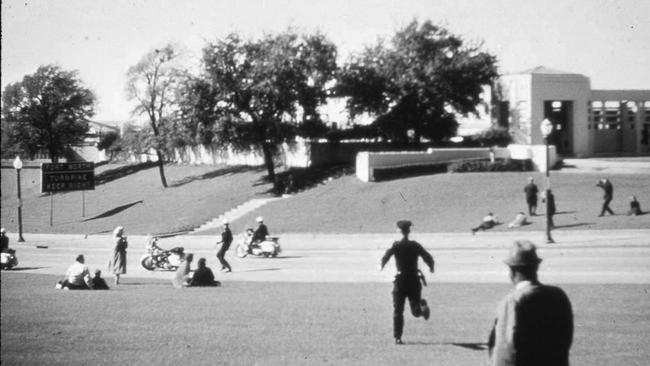
Jerrie looked up at the ceiling and was beginning to cry. She was fighting, fighting, and winning the fight to contain the tears welling in her lower eyelids. Only when she knew she could contain the tears did her head come down. She looked at me and rasped out:
J: I was at the Redbird Airport.
I couldn’t believe this was happening, and I had no plan for how to proceed from here. Was this a confession that she was June? Was she dropping the pretence that they were not one? Was she admitting some connection to the assassination? There wasn’t a lot known about this Redbird flight, except for the obscure story that a plane sat waiting to take off and revving its motor at an airport in the direction Oswald was headed. At least that was the speculation, that Oswald could have been trying to get to this flight. None of this did I mention.
M: You were at the Redbird Airport in Dallas on the day Kennedy was killed. It was you at the airport and not June Cobb?
J: Yes.
She was regaining her composure now.
J: How did you know?
M: I didn’t. I guessed.
Much more went on between us in this three-hour meeting. At times it felt confessional, and at other times she was more guarded. There were many currents and eddies to it. I come back to my memory of this conversation frequently, and always will.
For all my suspicions that Jerrie was a spy who used the name June Cobb, I still couldn’t fathom her involvement on the wrong side of the equation. The person I knew couldn’t have been more than a loyal agent forced to do an assignment, unwittingly placed in the wrong place at the wrong time. I hoped she would unburden herself to me in time. It was obvious that she needed to, and part of her wanted to. Her comment that June knew who killed Kennedy but “no one would ever believe her” was telling. If I could convince her that I would believe her, would she tell me what she knew?
As the morning wrapped up, we discussed the fate of the film. I said I’d put it on hold and suggested we start talking informally about her life and see where that went. She liked that idea.
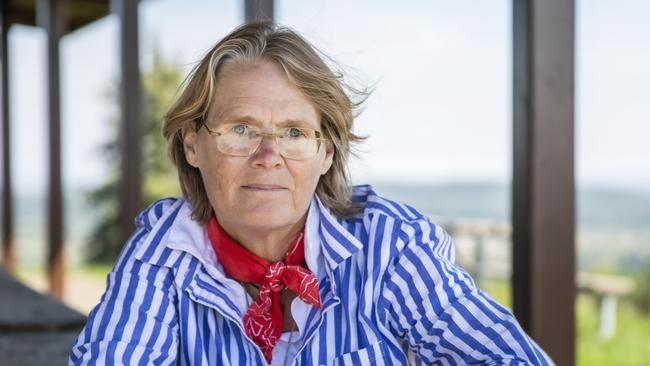
As I stood to depart, she said she loved me. Her manner toward me had always been warm and affectionate, as from a senior woman to a younger one, but this phrasing was unusually direct. I’d spent two years interviewing her, and we’d never eaten together and still hadn’t. She’d never offered me a beverage in her home. Now I’d confronted her about being someone else, someone with links to the Kennedy assassination, and our friendship was still standing. Was it my imagination, or was she even warmer to me now?
This was the beginning of me truly knowing Jerrie Cobb.
Postscript: Mary Haverstick’s film was never made. According to Haverstick, Cobb (who died in 2019) remains a key figure in the assassination of John F Kennedy.A Woman I Know: Female Spies, Double Identities, And a New Story of The Kennedy Assassinationby Mary Haverstick (Scribe Publications) is out on November 15.




